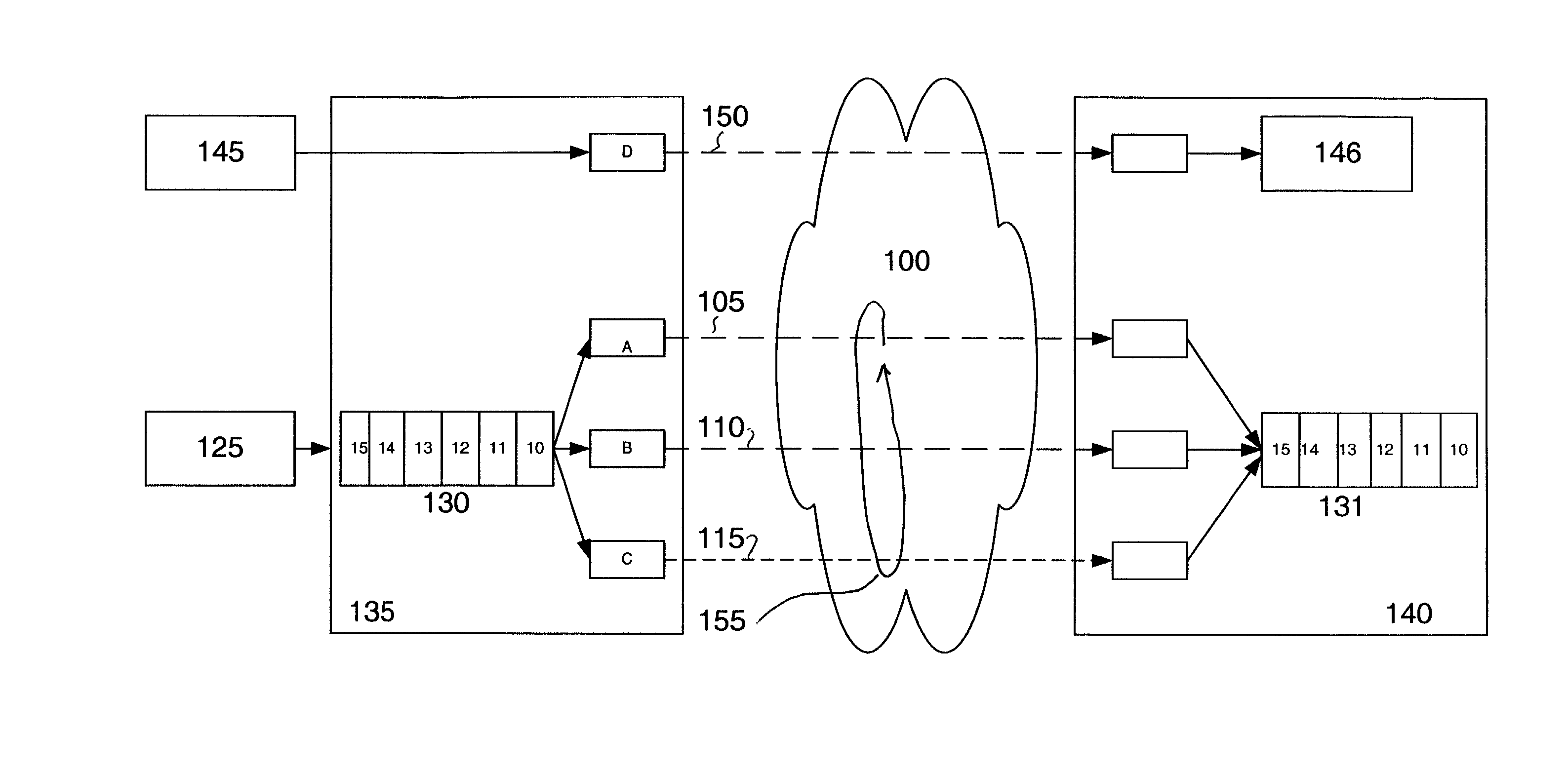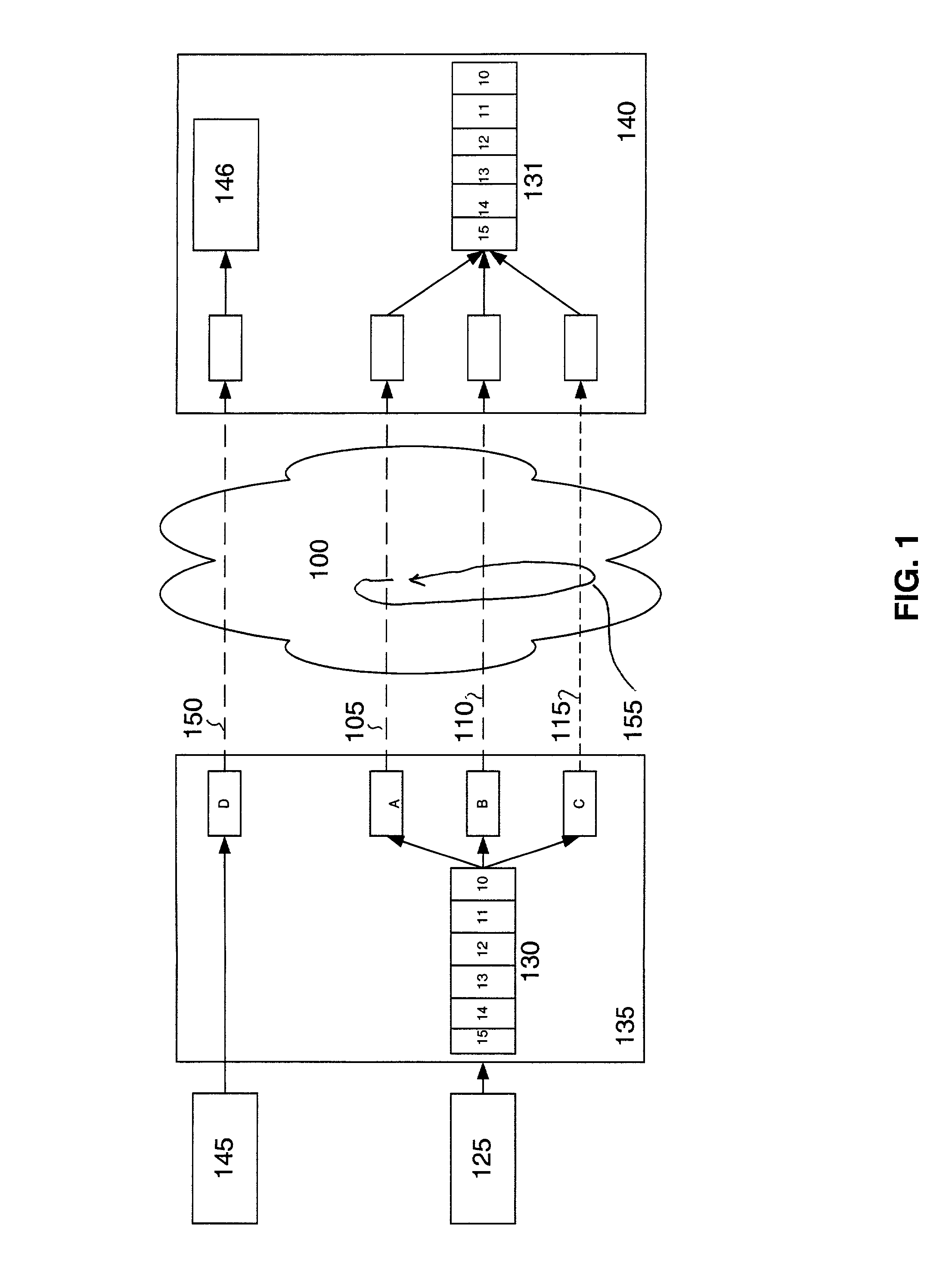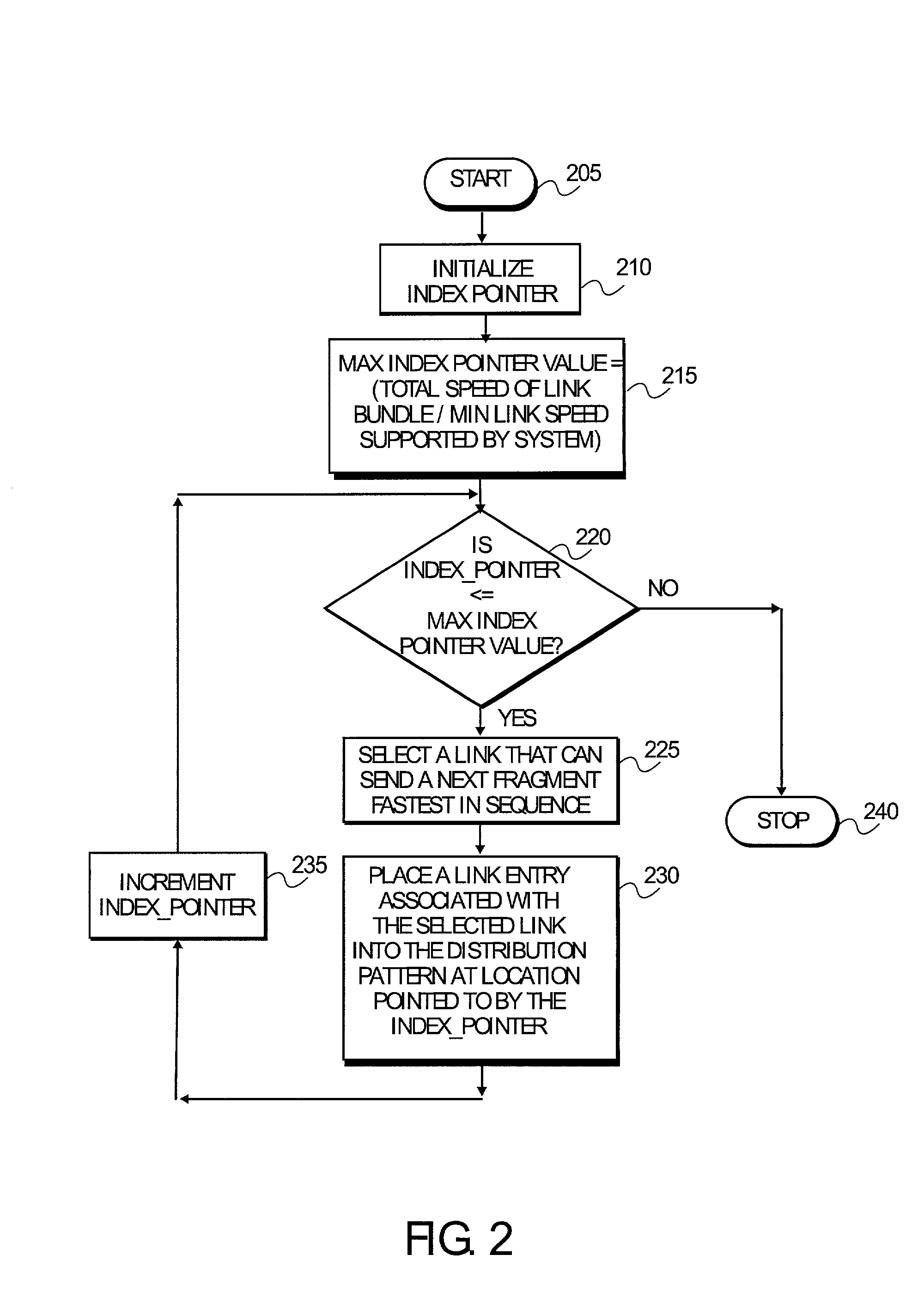Method for multi-link load balancing to improve sequenced delivery of frames at peer end
a load balancing and sequence delivery technology, applied in the field of data transmission, can solve problems such as frame relay users beginning to experience bandwidth limitation, frame relay users not trying to correct errors, and wan bandwidth not keeping pa
- Summary
- Abstract
- Description
- Claims
- Application Information
AI Technical Summary
Problems solved by technology
Method used
Image
Examples
Embodiment Construction
[0014]A method and a system for distributing Multilink Frame Relay (MFR) fragments are disclosed. A link distribution pattern is established based on a total speed of the links in a link bundle and a minimum possible link speed that is supported by a system. A link is selected when it is capable of transmitting a fragment in a shortest time while decreasing out-of-sequence arrival. A faster link in the link bundle may appear in the distribution pattern more than once. Each fragment is distributed to a link in the link bundle based on the distribution pattern.
[0015]FIG. 1 is an illustration of an end-to-end data transmission using MFR. The data processing engine (DPE) 135 and DPE 140 have previously been configured to transmit and receive data respectively using MFR across network 100. In this example, 0.5 Mbps is a minimum possible link speed supported by the DPE 135. Frame relay frames coming into the DPE 135 are sent to the DPE 140 using parallel transmission paths on a frame-by-f...
PUM
 Login to View More
Login to View More Abstract
Description
Claims
Application Information
 Login to View More
Login to View More - R&D
- Intellectual Property
- Life Sciences
- Materials
- Tech Scout
- Unparalleled Data Quality
- Higher Quality Content
- 60% Fewer Hallucinations
Browse by: Latest US Patents, China's latest patents, Technical Efficacy Thesaurus, Application Domain, Technology Topic, Popular Technical Reports.
© 2025 PatSnap. All rights reserved.Legal|Privacy policy|Modern Slavery Act Transparency Statement|Sitemap|About US| Contact US: help@patsnap.com



